apiesdoring bonsai
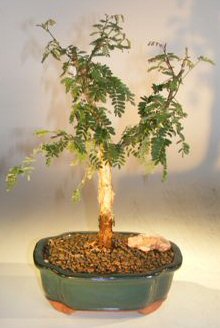 Monkey Thorn Bonsai Tree(acacia galpiwii)
Monkey Thorn Bonsai Tree(acacia galpiwii)BONSAI ACADAMY OF S.A. TRADING as BONSAI FRIEND NEELS VAN TONDER EASY GROW INDOOR AND OUTDOOR BONSAI FULL AFTER VENTAGE SERVICE RETAIL CORPORATE GIFTS WHOLESALEStyling Tu Bonsai In the art of bonsai, there are many styles in which you can form your tree. For exercise in this cd we will be looking at the right informal style only. The following information is based on a bonsai tree you already have, considering that it was basically molded in the right informal style by the person who planted the tree originally in the bonsai container. If you are interested in the various Japanese styles, there are plenty of bonsai books available to show you the different styles, or, you can contact bonsai friend and we will provide you with the contact number of your local bonsai club. LEAF NIPPINGLeaf is continually made throughout the year, while its bonsai tree produces new leaves. The elimination of growing councils in a specific way, at a given time, promotes very vigorous leaf growth. The final result, smaller, healthier and darker green leaves, with short internaldal distances. The previous section on tree knowledge is necessary to understand this part of the poda, to know why, what, and when. A tree always wants to grow up, trying to extend its crown. As soon as your bonsai tree begins to produce new growth in spring, many new growth points begin to grow up, trying to extend and expand the top crown, creating many new leaves as it grows. Please take note! By allowing the new growth tip to develop at least two to four leaves for new growth, and remove the growth tip in such a way that the last leaf left in the stem, point out and down, or sideways, redirect the flow of sugar sap, which was intended for the growth tip, to the auxiliary shoots where the remaining leaves are. Triggering the auxiliary buds to produce new growth again, but smaller. Not forcing, but guiding the tree to produce new growth in the direction it wants it to develop. The last blade left in the stem after having removed the growing tip, determines the direction of growth in the future. Then redirects the unwanted upward growth to a pattern of growth side or down with smaller secondary leaves. By removing the tip of cultivation always leaves a bit of ramillete to die for itself, this way you make sure you don't cut to close the last sheet to hurt or destroy the auxiliary bud you want to use. This is called the "Clip and Growth" method used by the "Bonsai School of Lignan in China. " Stinkwood White Wood Seeds Remember where there is a leaf today, a new growth tip will develop next time. The promotion of more growing tips in the upper crown forces the tree to produce more roots of fine food. What happens at the top of the floor also occurs under the floor. Seeds of white woodRemember where there is a leaf today, a new tip of growth will develop next time. The promotion of more growing tips in the upper crown forces the tree to produce more roots of fine food. What happens at the top of the floor also occurs under the floor. By making the extraction of leaves regularly throughout the growing season it will not only control the growing pattern of your bonsai tree, but the internal distance between the leaves will also remain shorter. This will reduce the number of large podas that will be made annually. It also creates more flow of sap, thus increasing the size of the diameter of the trunk and branches, as well as thickening the skeleton of the bonsai tree. Understanding the different types of leaf formation can sometimes be a bit frustrating. Stinkwood White or Chinese Elm is easy. As the growing tip begins to develop, the first leaf grows to the left and the next leaf to the right, left and right and so on. This is a unique sheet formation. The second growth pattern I have identified is where the leaves develop left and right, but with two or more attached leaves in the same place. A Bauhenia is an example of this growth. The third category is the formation of opposite leaves. Wild Olive, Chinese Maple, Japanese Maple, Chinese May, Chinese June, Pomegranate, Buddleja, Pride of India and Privet are good examples of this growing pattern. Where the rising tip is removed, two new shoots grow in opposite directions forming a "v". Or left, right or inside and outside. The growth pattern ahead is called single leaf spiral growth. Silver Birch, Mulberry, Wild Fig, Kai-Apple, Pussy Willow and the Fifteen of Flowering are groups here. Fifth line I have learned is growth very similar to the previous one, but, with a slight variation. I also classify it as spiral growth, with the exception that a group of leaves develop at the same time without any internal distance between the leaves. Later, as the rising tips become longer (about two to three centimeters long) the internalal distance between the leaves increases to the point where the rising tip can be determined. Cotoneaster and the thorn of fire are good examples. Growth in three ways is for me, the weirdest of all. Gardenia can be listed under this growth. New tips of growth are developed in three different directions at the same point. One up, one down and one down. The total appearance of such a tree is always developed in a weeping style. Coniferous trees such as Pines, Junipers, Spruces and Cipreses produce a new growth of an existing leaf. The original leaf grows to a certain length and then pushes out side growth to become another leaf on a sheet. The whole process is repeated from time to time. To promote good growth in the bush, take off the new leaf to a length of approximately two to three centimeters with fingernails, and then repeat the exercise in all new lateral growth. As the new growth develops in parallel, take into account that the latest growth remaining in the stem will determine the direction of future development. The new growth can always be cut back to the point where the aforementioned rule can be achieved. Why is a finger nail recommended and not a pair of scissors? Cutting a fir tree with scissors will result in breakage and dying again to the point where it was cut. If a fir tree has to be cut with a pair of scissors, allow some space to die again so that it can be removed later when the new lateral growth is stronger. The last growth I have found is the growing pattern that the novice or the beginner does not understand so easily. If explained by itself, the concept is not normally understood. This is the same problem I fought many years ago, and for this reason I have decided to explain it for the last time. I call it the spiral growth leaf. If I mention a Boer-Bean-Tree, or any of the Acacias like Monkey Thorn or the Black Monkey Thorn or the Knob Thorn, you'll know what I'm talking about. This is where you have a lot of leaves glued to a stem, to compose a leaf. Monkey Thorn Branch YEARS The largest pod of higher growth is made annually at the end of winter. At the same time, when roses and fruit trees are pruned, when the flow of sap in the tree is lower, to prevent the tree from loosing too much moisture where and when a branch is removed. When thick branches are removed from more than one centimeter, the wound needs to be treated with tree sealant to prevent fungi and infections. As soon as you do. CHINESE MAPLE CYPRESS AMERICAN SWAMP SHAPING The wiring is made to change the appearance of the tree by smoothing the line of the trunk or branches, changing it while bending or replenishing the branches to a more pleasant natural flow. If you have two branches directly over the others, you can use wire to change the direction to allow both branches to receive sunlight, folding one back and another slightly to the front. A bonsai producer normally uses copper wire or anodized aluminium wire. Copper wire is expensive and cannot be easily obtained. Second, it is harder and harder for the rookie to start learning how to wield and therefore I recommend aluminum wire that is easier to get, viable and easier to fold. In the thin branch you have to bend, use wire from 1 to 1,5 mm, in branches from 1.5 to 2.5 mm of wire, and in the trunk of 2.5, 3, 3.5, 4 or 5 mm of wire. To know what size cable to use, try the branch that needs to be wired, feeling the branch's tension gently moving up and down or side with the finger. The correct sized wire should have a little more resistance and tension than the branch you want to wield. The length of the wire is usually determined to be at least one and a half times the length of the branch that should be wired. When using a bonsai tree, it always works from the bottom up. First the trunk, followed by the lower branches, working all the way up and out. If the trunk needs to be wired, make sure to press one side of the wire in the back near the trunk, at least 3 to 5 cm on the floor to anchor it and secure it. When using a branch, wrap the wire at least two or three times around the trunk to secure it and work from the inside, into the branch leaves. Wrap the wire at a 45-degree angle around the branch to be wired, not too tight, as this will make marks in the cortex, also not too loose as you will be unable to reach the desired angle. When applying the wire, first concentrate on the application and spacing of the wire, use both hands to guide the wire and to prevent the branch from breaking. Once the wire is in place, use both hands again to bend it slowly slowly at once. You can always add a little more curve later than too fast. The wiring is usually done in summer when growth has become slightly hard, (we call it woody), and is left in the tree for the rest of the growth season. For the next few days and weeks, after using a section of your bonsai tree, fold the wire a little at a time to achieve the desired shape. Don't hurry, you can always relive but a broken branch can never be replaced. When removing the wire from the tree, don't try to relax. Using a wire cutter very carefully to cut the wire into small sections as the new growth that has developed during the growth season can be damaged. Check the wire regularly to make sure that the wire is not cut into the bark, if this happens to remove the wire immediately and turn back the section later, or if the desired curve or shape was not succeeded to turn again later. When a tree is wired it is under tension and it is recommended not to feed the tree for next month or two and be kept out of the hard sun and be sprayed with water often. Never repot or root try a wiring tree. The bonsai cannot handle stress in higher growth and in the root system at the same time and you could release your tree. 3 MM MIDDLE 2 MM RIGHT 4 MMALUMINIUM WIRE Before and after separation Copyright © 2021. All rights reserved. Designed by .

Black Monkey Thorn (Acacia Burkei) 2010 (5 yrs) - Eastern Cape Bonsai Show - Nov 2015 | Bonsai tree, Bonsai, Bonsai care

LENNARD'S BONSAI BEGINNINGS.: Acacia burkei/Black Monkey Thorn progression.
My Black Monkey Thorn (senegalia burkei). Bushveld style or something similar. : Bonsai

Monkey Thorn Acacia – *Wigert's Specimen Tree* – Wigert's Bonsai

Monkey Thorn Bonsai — Steemit

Bonsai of a Monkey Thorn. Apiesdoring. | Bonsai, Plants, Acacia tree
Mikibu Bonsai

LENNARD'S BONSAI BEGINNINGS.: Acacia burkei/Black Monkey Thorn progression.
Mikibu Bonsai

Pretoria Bonsai Kai exhibition | Chinese elm bonsai, Bonsai tree, Bonsai

7❀⊱ ACACIA MONKEY THORN TREE AFRICAS PRIDE ✿ HOUSE PLANT BONSAI SEEDS Ƹ̵̡Ӝ̵̨̄Ʒ⊰❀ | eBay
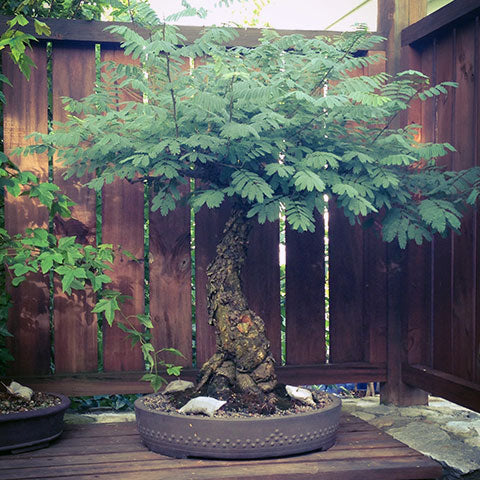
My first Acacia bonsai tree - Bonsai Tree (Pty) Ltd.

LENNARD'S BONSAI BEGINNINGS.: Acacia burkei/Black Monkey Thorn progression.
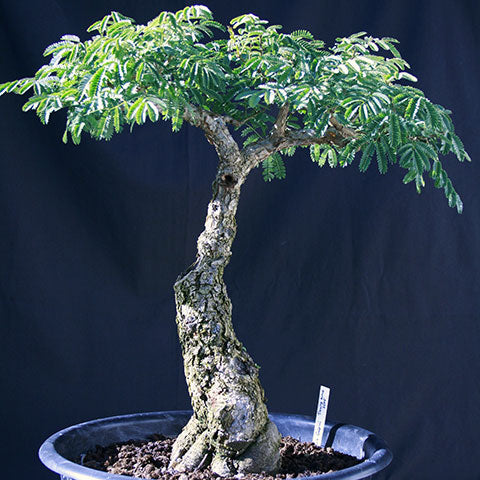
My first Acacia bonsai tree - Bonsai Tree (Pty) Ltd.
Styling Your Bonsai | Bonsai Friend
Mikibu Bonsai

96 Years Old Bonsai. Black Monkey Thorn tree, grown from seed as a Bonsai. Many people take cuttings from large trees and pass… | Bonsai tree, Bonsai, Growing seeds
Monkey thorn advice please | Bonsai Nut
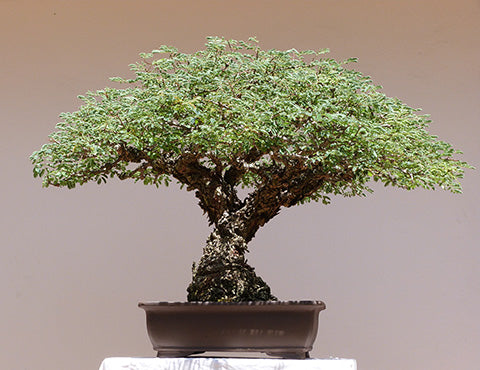
My first Acacia bonsai tree - Bonsai Tree (Pty) Ltd.
WBFF Bonsai
Tree profile: Black-monkey thorn | Experiment

Black Monkey Thorn #videoupdate – Bonsaiwithromano

Bonsai Trees for sale in Manufacta, Roodepoort | Facebook Marketplace | Facebook
air layering my acacia monkey thorn - Bonsai forum - Bonsai Empire

My acacia(swart apiesdoring/left) and Heilboon(right). Both about a year old now. : Bonsai

Growing Bonsai: Bonsai Tree Care for Beginners | The Old Farmer's Almanac

Seeds - 10 Acacia galpinii (Monkey Thorn) Bonsai Tree Seeds - Indigenous was sold for R35.00 on 16 Feb at 13:31 by Seeds and All in Port Elizabeth (ID:19115460)

LENNARD'S BONSAI BEGINNINGS.: Acacia bonsai - Africa's pride!

My First Bonsai Tree! - Black Monkey Thorn

Miguel Louis vdVyver (@LouisvdVyver) | Twitter
Acacia Bonsai | Bonsai Ginseng
MONKEY THORN - Serenity Farm

Paul's Acacia – Patience

My first Acacia bonsai tree - Bonsai Tree (Pty) Ltd.

Bonsai Acacia Burkei (Black Monkey Thorn) – iloveza.com

Monkey Thorn Bonsai – Bonsaiwithromano
Styling Your Bonsai | Bonsai Friend

Bonsai Zak - Acacia burkei - swart apiesdoring / black... | Facebook

How To Trim Your Bonsai Tree - YouTube
What Is Bonsai Art. San Antonio Bonsai Society Inc. When To Hard Prune Chinese Elm Bonsai. Bonsai Plant Types. Specimen Bonsai Uk. Frostschaden Am Ilex Crenata Bonsai Pflegeanspruche. Cara Buat Bonsai Beringin
Post a Comment for "apiesdoring bonsai"